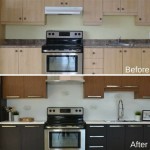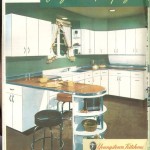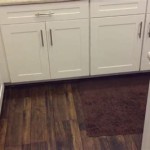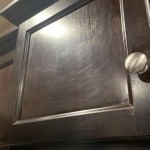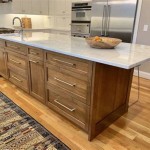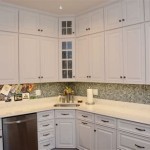Highest Rated Kitchen Cabinets: A Comprehensive Guide
Choosing kitchen cabinets is a significant investment and a crucial decision for any homeowner undertaking a renovation or new construction project. Kitchen cabinets form the backbone of the kitchen's design, influencing both functionality and aesthetic appeal. Selecting the "highest rated" cabinets requires careful consideration of various factors, including material quality, construction methods, design style, and overall value. This article provides a comprehensive guide to understanding the key elements that contribute to a kitchen cabinet's high rating, enabling informed decision-making.
Understanding the Criteria for High Ratings
The concept of "highest rated" is subjective and depends on individual needs and priorities. However, some objective criteria are consistently considered when evaluating kitchen cabinets. These include material durability, construction quality, storage solutions, aesthetic appeal, and customer satisfaction. A cabinet receiving high marks across these areas is generally considered a top performer. Customer reviews and professional ratings often consider these factors when determining the best overall cabinet options.
Material durability plays a significant role. Cabinets constructed from solid hardwood or high-quality plywood are typically preferred for their longevity and resistance to warping, moisture, and everyday wear and tear. The finish applied to the cabinet's exterior is also crucial. A durable finish protects the underlying material and contributes to the cabinet's overall appearance over time. Cabinets should be able to withstand spills, cleaning, and regular use without showing signs of damage.
Construction quality is another critical factor. Well-constructed cabinets feature solid joinery, sturdy drawer boxes, and smooth-operating hardware. Dovetail joints, for example, are a hallmark of quality craftsmanship and indicate a robust connection between cabinet components. The hardware, including hinges and drawer slides, should be of high quality to ensure smooth and reliable operation. Cabinets with soft-close mechanisms for doors and drawers are often preferred, as they prevent slamming and reduce wear and tear.
Storage solutions are essential for a functional kitchen. High-rated cabinets often incorporate innovative storage features, such as pull-out shelving, spice racks, and built-in organizers. These features maximize space utilization and make it easier to access and organize kitchen essentials. The interior of the cabinet should also be well-designed, with adjustable shelves and ample space for storing various items.
Aesthetic appeal is a subjective but important consideration. The style of the cabinets should complement the overall design of the kitchen and reflect the homeowner's personal taste. Cabinets are available in a wide range of styles, from traditional to contemporary, and in various colors and finishes. The design should also consider practical aspects, such as the ease of cleaning and maintenance.
Customer satisfaction, often reflected in reviews and ratings, provides valuable insights into the real-world performance of kitchen cabinets. Reviews from other homeowners can highlight potential issues or confirm the quality and durability of the product. Professional ratings from industry experts can also offer an objective assessment of the cabinets' features and performance.
Exploring Cabinet Materials and Their Impact on Ratings
The materials used in cabinet construction significantly influence their durability, appearance, and overall rating. Common materials include solid wood, plywood, medium-density fiberboard (MDF), and particleboard. Each material has its advantages and disadvantages, and the choice depends on budget, desired aesthetics, and performance expectations.
Solid wood is often considered the gold standard for kitchen cabinets due to its durability and natural beauty. Common wood species include maple, oak, cherry, and walnut. Solid wood cabinets are resistant to warping and can be refinished if damaged. However, solid wood is more expensive than other materials and can be susceptible to expansion and contraction in humid environments. The grain pattern and color variations in solid wood add to its aesthetic appeal, but can also make it challenging to achieve a uniform look throughout the kitchen.
Plywood is an engineered wood product made from layers of wood veneer glued together. High-quality plywood is strong, stable, and less prone to warping than solid wood. It is also a more affordable alternative to solid wood, while still offering excellent durability. Plywood is often used for cabinet boxes and shelves, providing a solid foundation for the overall structure. Plywood is also available in different grades, with higher grades featuring smoother surfaces and fewer imperfections.
Medium-density fiberboard (MDF) is another engineered wood product made from wood fibers compressed with resin. MDF is smooth, dense, and resistant to warping. It is often used for cabinet doors and drawer fronts because it provides a consistent surface for painting or laminating. MDF is more affordable than solid wood and plywood, but it is also less resistant to moisture damage. It is important to choose high-quality MDF and ensure that it is properly sealed to prevent water absorption.
Particleboard is the least expensive option for cabinet construction. It is made from wood chips glued together under pressure. Particleboard is not as strong or durable as solid wood, plywood, or MDF, and it is highly susceptible to moisture damage. It is typically used for cabinet boxes in lower-priced cabinets. While particleboard can be a budget-friendly option, it is important to be aware of its limitations in terms of durability and longevity.
Ratings assigned to cabinets frequently reflect the materials used in their construction. Cabinets constructed primarily using solid wood or high-grade plywood generally receive higher ratings due to their increased durability and longevity. Cabinets utilizing MDF or particleboard might receive lower ratings unless they undergo rigorous testing and feature protective coatings that mitigate potential weaknesses.
Dissecting Cabinet Construction: Framed vs. Frameless
Cabinet construction methods significantly impact the overall strength, appearance, and accessibility of kitchen cabinets. The two primary construction types are framed and frameless. Understanding the differences between these construction methods is crucial when selecting cabinets that meet specific needs and preferences.
Framed cabinets, also known as traditional cabinets, feature a face frame that is attached to the front of the cabinet box. The face frame provides structural support and creates a visible border around the cabinet opening. The doors and drawers are attached to the face frame, and the hinges are typically visible. Framed cabinets are generally more robust than frameless cabinets and can withstand heavier loads. The face frame also allows for more customization options, such as decorative moldings and trim.
Frameless cabinets, also known as European-style cabinets, do not have a face frame. The doors and drawers are attached directly to the cabinet box, creating a sleek and modern look. Frameless cabinets offer greater accessibility to the interior space since there is no face frame to obstruct access. They also provide more storage space because the cabinet box can be larger without the need for a frame. Frameless cabinets require precise construction and high-quality hardware to ensure stability and durability.
The choice between framed and frameless cabinets depends on personal preferences, budget, and desired aesthetic. Framed cabinets are often preferred for traditional or transitional kitchens, while frameless cabinets are popular in contemporary or modern designs. Framed cabinets typically offer more customization options, while frameless cabinets provide greater accessibility and storage space.
The construction method directly influences the perceived value and rating of a cabinet set. Cabinets with robust framed construction are often regarded as more durable, providing long-term value. Conversely, frameless cabinets, while offering a modern aesthetic and increased accessibility, rely heavily on the quality of materials and hardware to maintain structural integrity. This difference in construction can lead to variations in both price and owner satisfaction, directly affecting ratings.
The joinery used in both framed and frameless cabinets also affects their ratings. High-quality joinery, such as dovetail joints and mortise-and-tenon joints, ensures a strong and durable connection between cabinet components. Cabinets with weak or poorly executed joinery are more prone to failure and will likely receive lower ratings.
Hardware and Features That Elevate Cabinet Ratings
Beyond materials and construction, the hardware and features incorporated into kitchen cabinets contribute significantly to their functionality, convenience, and overall rating. Hardware encompasses hinges, drawer slides, knobs, pulls, and other functional components, while features include organizational accessories and design elements that enhance usability.
High-quality hinges and drawer slides are essential for smooth and reliable operation. Soft-close hinges and drawer slides prevent slamming and protect the cabinets from wear and tear. Full-extension drawer slides allow for complete access to the contents of the drawer, maximizing storage space. The hardware should be durable and resistant to corrosion.
Knobs and pulls not only provide a functional grip but also contribute to the overall aesthetic of the kitchen. They are available in a wide range of styles, materials, and finishes, allowing homeowners to customize the look of their cabinets. The hardware should be comfortable to use and complement the cabinet design.
Organizational accessories, such as pull-out shelving, spice racks, and utensil dividers, can significantly enhance the functionality of kitchen cabinets. These features maximize space utilization and make it easier to access and organize kitchen essentials. Adjustable shelves allow for flexible storage options. Cabinets with well-designed organizational features are typically rated more highly.
Other features that can elevate cabinet ratings include built-in lighting, integrated waste bins, and touch-to-open mechanisms. These features add convenience and sophistication to the kitchen. Cabinets with innovative features are often seen as more valuable and desirable.
The presence and quality of these features contribute substantially to the perceived value and, consequently, the rating of kitchen cabinets. For example, cabinets incorporating soft-close mechanisms on both doors and drawers are generally regarded as superior to those without. Integrated storage solutions, such as pull-out pantries or spice racks, also boost the perceived value and utility of the cabinets, leading to higher customer satisfaction and improved ratings.

11 Best Kitchen Cabinets In 2024 Our Top Picks

The Best Inexpensive Kitchen Cabinets 2024

9 Best Kitchen Cabinets Of 2024

11 Best Kitchen Cabinets In 2024 Our Top Picks

Top 10 Characteristics Of High Quality Kitchen Cabinets

9 Best Kitchen Cabinets Of 2024

Top 10 Characteristics Of High Quality Kitchen Cabinets Premier Kitchens And

How To Find The Best Kitchen Cabinets 2024 Guide Forbes Home

Best Kitchen Cabinets Guide 2024

Best Kitchen Cabinets Guide 2024
Related Posts


